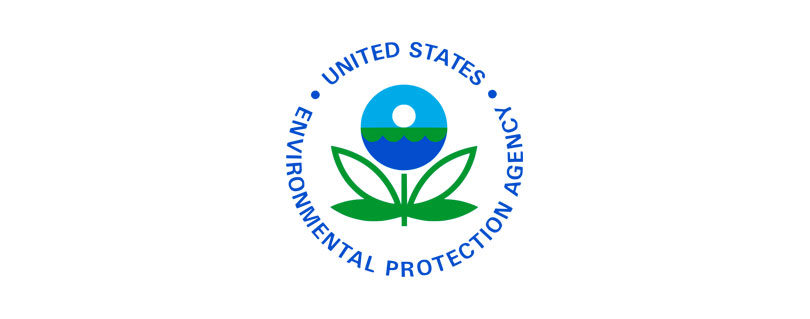Biden-Harris Administration Announces Latest Steps to Reduce Plastic Pollution Nationwide
Publilshed by the U.S. Environmental Protection Agency (EPA)
Today, the US Environmental Protection Agency (EPA) released the draft “National Strategy to Prevent Plastic Pollution” for public comment, a significant step forward in the Biden-Harris Administration’s efforts to reduce pollution and build a circular economy for all. EPA’s draft strategy includes ambitious actions to eliminate the release of plastic and other waste from land-based sources into the environment by 2040.
“Plastic pollution negatively impacts our environment and public health with underserved and overburdened communities hit hardest,” said EPA Administrator Michael S. Regan. “As a global leader in the efforts to address these challenges and pave the way for the future, we must combat plastic pollution from every angle and prevent it at every step of the plastic lifecycle. As we take comment on EPA’s draft national strategy, the agency will continue this work to protect people and the planet, ensuring the benefits reach our most vulnerable communities.”
The release of EPA’s draft national strategy comes as the agency and the Biden-Harris Administration celebrate Earth Week, and was released alongside a new White House Interagency Policy Committee (IPC) on Plastic Pollution and a Circular Economy. The IPC will coordinate federal efforts on plastic pollution, prioritizing public health, economic development, environmental justice, and equity to ensure that the benefits of acting on plastic pollution – including jobs, minimized exposure to harmful chemicals, and clean communities – are available to all.
In the last 20 years, global annual production of plastics and plastic waste has more than doubled. As a result, communities face pollution not only from the manufacture and transportation of plastic and associated chemicals, but from the millions of tons of plastic products end up in waste streams and “leak” into parks, neighborhoods, waterways and oceans. Products that range from shopping bags and takeout food containers to beverage bottles, food wrappers, bottle caps, and much more can be found in the environment.
Working closely with industry leaders and additional stakeholders, EPA identified three key objectives for the strategy:
- Objective A: Reduce pollution during plastic production.
- Objective B: Improve post-use materials management.
- Objective C: Prevent trash and micro/nanoplastics from entering waterways and remove escaped trash from the environment.
The draft “National Strategy to Prevent Plastic Pollution,” together with EPA’s “National Recycling Strategy,” identifies how the Agency can work collaboratively with U.S. organizations to prevent plastic pollution and reduce, reuse, recycle, and capture plastic and other waste from land-based sources. These actions support a circular approach to the management of plastics – one that is regenerative by design, enables resources to maintain their highest value for as long as possible, and aims for the elimination of waste.
Examples of actions in the draft strategy include:
- Improve the design of plastic products to provide more reuse and refill opportunities.
- Increase solid waste collection and ensure that solid waste management does not adversely impact communities.
- Produce fewer single-use, unrecyclable, and frequently littered plastic products, and reduce pollution from plastic production facilities.
- Increase public awareness of ways to reduce plastic and other trash in waterways.
EPA invites public comments on the draft “National Strategy to Prevent Plastic Pollution.” EPA included specific questions in the draft report for the public and other organizations to provide feedback. EPA expects to finalize the strategy by the end of the year.
Additionally, EPA is posting public comments on the Federal Trade Commission’s request for comment on potential updates to its “Green Guides” for the use of environmental marketing claims. Marketing claims include recyclable, compostable, renewable energy, and general environmental benefit claims, among others. EPA supports strengthening requirements for environmental marketing claims and combating greenwashing, including requiring higher thresholds for plastic products and packaging to be marketed as recyclable.
Background
In response to growing local, national, and global concerns over plastic pollution and marine debris, Congress passed the bipartisan Save Our Seas 2.0 Act. Title 3, “Improving Domestic Infrastructure to Prevent Marine Debris, Section 301 Strategy for Improving Post-Consumer Materials Management and Water Management” charges EPA with developing a strategy to improve post-consumer materials management and infrastructure to reduce plastic waste and other post-consumer materials in waterways and oceans. Congress also asked EPA to “distribute the strategy to States and make it publicly available, including for use by for-profit private entities involved in post-consumer materials management and other nongovernmental entities.” Together with the “National Recycling Strategy,” the “National Strategy to Prevent Plastic Pollution” fulfills this mandate.
This is a domestic strategy that identifies strategic objectives and voluntary actions that all U.S. organizations can implement to reduce, reuse, collect, and prevent plastic and other waste from entering the environment. The actions are not limited to EPA’s authority or jurisdiction but are actions where EPA can work collaboratively with entities – non-governmental organizations, governments, tribes, and others – to address plastic pollution. The strategy targets post-consumer materials, especially those items that are expected to make their way through the municipal solid waste stream but are leaked or littered, such as single-use plastics. Additionally, the strategy recognizes the harmful impacts associated with the production, manufacture and transport of plastic products on communities from air and water pollution associated with those processes. The proposed actions under each objective create opportunities for all to reduce the amount of plastic and other pollution in communities, parks, waterways and oceans.
Read the draft “National Strategy to Prevent Plastic Pollution” and provide comments.
In support of the National Recycling Strategy and the Bipartisan Infrastructure Law, EPA has also developed an interactive map of recycling markets that highlights existing infrastructure, per capita generation and recycling of post-consumer material, and other relevant market factors.
Learn more about EPA’s Trash Free Waters program.
Learn about EPA data on plastics.
Learn more about EPA’s work to promote a Circular Economy.
Read the full article at: https://www.epa.gov/newsreleases/biden-harris-administration-announces-latest-steps-reduce-plastic-pollution-nationwide


